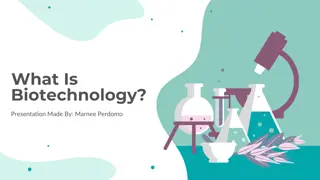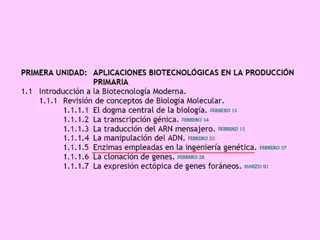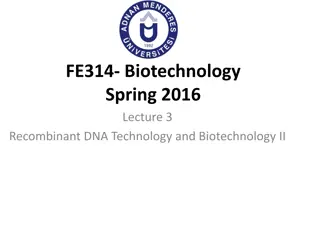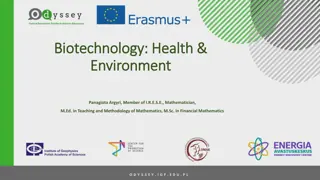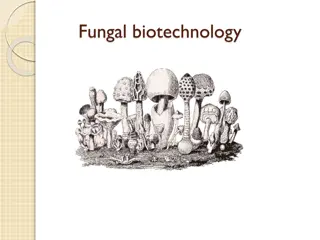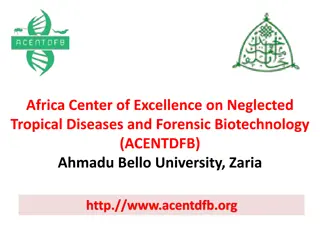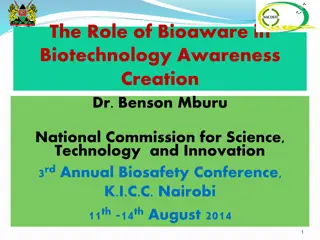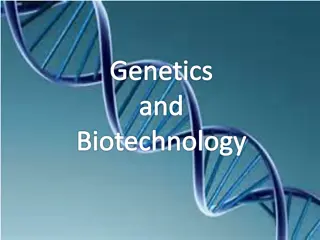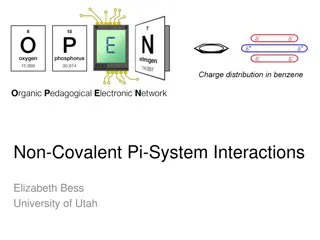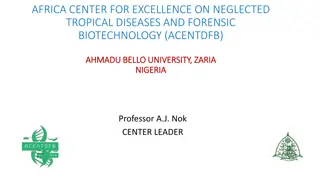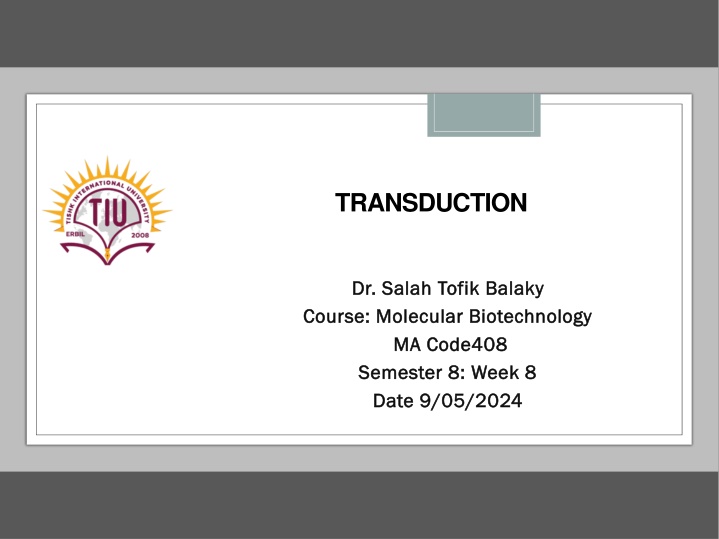
Bacterial Transduction in Molecular Biotechnology
Explore the concept of bacterial transduction, a process where DNA is transferred between bacteria via viruses. Learn about generalized and specialized transduction, their mechanisms, and the steps involved in generalized transduction. Discover how genetic information can be exchanged between bacterial hosts through viral DNA incorporation.
Download Presentation

Please find below an Image/Link to download the presentation.
The content on the website is provided AS IS for your information and personal use only. It may not be sold, licensed, or shared on other websites without obtaining consent from the author. If you encounter any issues during the download, it is possible that the publisher has removed the file from their server.
You are allowed to download the files provided on this website for personal or commercial use, subject to the condition that they are used lawfully. All files are the property of their respective owners.
The content on the website is provided AS IS for your information and personal use only. It may not be sold, licensed, or shared on other websites without obtaining consent from the author.
E N D
Presentation Transcript
TRANSDUCTION Dr. Salah Dr. Salah Tofik Course: Molecular Biotechnology Course: Molecular Biotechnology MA Code408 MA Code408 Semester 8: Week 8 Semester 8: Week 8 Date 9/05/2024 Date 9/05/2024 Tofik Balaky Balaky
Transduction Transduction is the process by which DNA is transferred from one bacterium to another by a virus. It is a process by which a bacterial phage (virus) picks up a piece of DNA from one bacterial cell and injects it into another where it is incorporated into the chromosome. In most cases, bacterial transduction takes place between members of the same species.
Types of transduction in bacteria Generalized transduction. Specialized transduction.
Generalized transduction In generalized transduction, phages can carry any part of the chromosome, the phage attaches to the bacterial cell wall and injects DNA into the bacterium. Normally this directs the synthesis of new viruses.
Generalized transduction Sometimes, however, bits of bacterial chromosome are accidentally incorporated into the viral DNA. When these viruses infect a new host cell, they can incorporate this genetic information from the previous bacterial host into the new bacterial host.
Steps of generalized transduction 1. A phage infects the donor cell. 2. Phage DNA and proteins are made. 3. Pieces of bacterial DNA are packaged in a phage capsid. 4. Then releases phage particles containing bacterial DNA. 5. A phage carrying bacterial DNA infects a new host cell. 6. Recombination can occur.
Steps of generalized transduction
Specialized transduction specialized transducing phages carry only restricted parts of the bacterial chromosome.In this case, only certain donor genes can be transferred by each viral strain. Different phages may transfer different genes. Specialized transduction is mediated by lysogenic (temperate) phages. The genes that get transferred depend on where the prophage has inserted in the chromosome.
Examples of specialized transduction 1. Lambda phage and the lac operon in E. coli. 2. Staphylococcus aureus and antibiotic resistance.
Antibiotic resistance in S. aureus Antibiotic resistance in S. aureus, particularly MRSA, presents a significant challenge in healthcare settings. Bacteriophages that infect S. aureus can carry genes for antibiotic resistance, such as genes encoding resistance to beta-lactam antibiotics like penicillin.
Next lecture Conjugation



